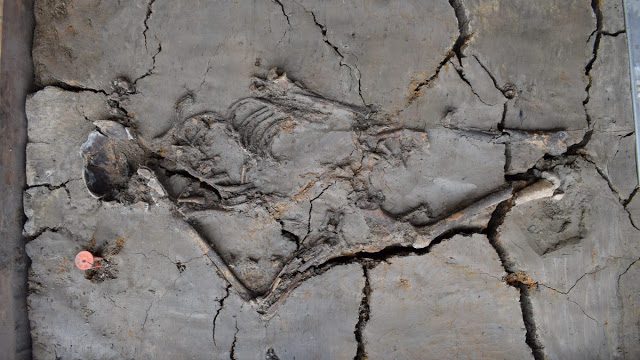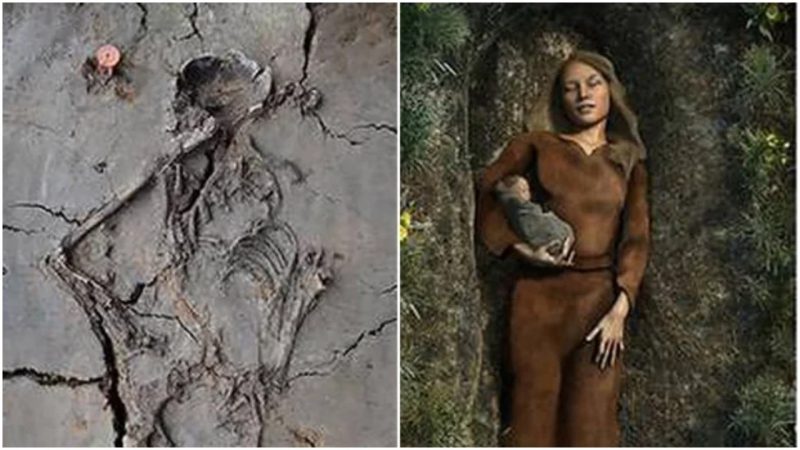Researchers working at an archaeological site in the municipality of Nieuwegein, south of the Dutch city of Utrecht, have made an astonishing Stone Age discovery. They’ve found a 6,000-year-old grave containing a baby in the arm of a young woman, most likely his mother. Experts say that this is the oldest infant grave ever discovered in the Netherlands, dating back to the late Stone Age.
IB Times reports that the baby’s remains were only discovered after a closer inspection of the woman’s skeleton was conducted by archaeological consultancy RAAP in Leiden. What was unusual about this particular skeleton was the fact that, unlike other skeletons discovered at the site in Nieuwegein, the right arm of this skeleton had been bent at a strange angle, which led to the discovery of the baby’s remains.
“The posture of the woman’s body did not conform to what we had found so far, that is, bodies whose limbs are placed parallel to the body. We then made the moving discovery that she was, in fact, cradling a little baby,” project leader Helle Molthof told NOS.
The bone fragments that were discovered at the site included a tiny jaw with several milk teeth, which helped scientists to conclude that the baby most probably had died when it was several months old. What makes this find even more unique is the fact that an infant’s skeletal bones would normally perish by now, but in this case, they were preserved due to a layer of clay and peat at the site.
Archaeologists believe that the woman holding the infant was between 20 to 30 years old at the time of her death. Although scientists believe that the woman is most likely the infant’s mother, a DNA test will be conducted to reveal the relationship and will also determine the sex of the baby.

Several more skeletons and many other archaeological finds were unearthed at the site during the past two years. According to Dutch News, over 136,000 well-preserved finds have been discovered in the area of Nieuwegein so far. Archaeologists believe that the discovery of the skeletons can provide vital information about the burial practices of the hunter-gatherer people of the Swifterbant culture, a people that lived in the region thousands of years ago.
Dated between 5300 B.C. and 3400 B.C., the people of the Swifterbant culture inhabited the territory of modern-day Netherlands, where they built their first primitive dwellings along the rivers of the area. These people allegedly lived in small groups of 40 to 80 individuals and their existence depended greatly on nature’s resources.
Similiar to other prehistoric people, the Swifterbant people primarily survived by hunting animals, fishing in the nearby rivers, and farming. However, what distinguished the Swifterbant culture from neighboring cultures is the fact that members of this culture were the first to domesticate animals such as dogs, pigs, sheep, and goats.
As mentioned above, the archaeological site in the municipality of Nieuwegein is rich with artifacts and all of them helped scientists in their research of the hunter-gatherer community that once thrived in this particular region of the Netherlands. Thanks to the discovery of these artifacts, archaeologist now know how the members of the Swifterbant culture lived, what food they ate, what hunting and fishing techniques they used, what their homes were like. But the discovery of the skeletons will surely provide more interesting information about their culture, customs, and traditions.
Prior to the discovery of the skeletons, scientists were unaware of how the people of the Swifterbant culture buried their dead and what happened to their children. Hopes are that this unique archaeological find will help in the further research of the burial practices and will reveal more details about the lives of these people.
